ASIC Regulatory Entity

In this article
Defining the term ASIC is an independent Australian Government body that is generally administered and set up under the Australian Securities and Investments Commission Act 2001 (ASIC Act). However, the majority of the work of the ASIC is carried out under the supervision of the Corporations Act.
ASIC main role
ASIC works as Australia’s integrated corporate and markets, financial services, and consumer credit regulator. The primary role of the ASIC act falls under:
- It helps maintain, facilitate, and improve the financial system‘s overall performance and the entities involved.
- Investors and consumers will be able to promote with complete confidence and can participate inside the financial system.
- It hence administers the law effectively and has minimal procedural requirements.
- Capable of storing, processing, receiving, and efficiently managing the information which they receive.
- Provide the information related to the companies or the bodies for public use.
- Take such actions which are necessary and enforce them to put an effect on the law.
How does ASIC operate?
Being the independent Australian government body, ASIC operates directly under the directions given with the supervision of commissioners who the Governor-General appoints.
What are the ASIC legislative responsibilities?
ASIC, based on the Australian Securities and Investments Commission Act 2001, is striving to:
- Facilitate, maintain and even improve the overall performance of the financial system along with the commercial certainty of the entity. This reduces the overall business costs and enhances the development of the economy.
- Let the investors and consumers have that utmost confidence to stay informed within the financial system.
- Plan to administer the law accordingly and with the minimal procedural requirements
The ASIC entity uses different regulatory tools to address all those harms that threaten consumer and investor outcomes. A few standard tools are supervision, enforcement action, engagement with the industry, education, and policy advice.
There are a few issues on the remit, and these specialized tools are used for achieving the needed outcomes, like:
- Supervising the entities on the regular basis
- Carrying out the risk-based surveillances which are targeting the specific incidents or varied transactions
- Undertaking all the thematic reviews which are focusing on the issues which are across the particular sector
- Enforcing the system of law
ASIC promotes and monitors market integrity and performs consumer protection concerning the Australian financial system and the payments system. They often advise, identify and even monitor the emerging risks based on product or sector risks related to the strategic priorities. A proper review of the basic parameters of the regulatory responsibilities is also conducted to know significant regulatory gaps. Monitor all those fundamental changes which can harm the consumers, investors, or the sectors that are part of its regulation.
Structure of ASIC
Based on the ASIC Act, the commission comprises 3-8 members responsible for the proper management and ASIC administration. ASIC’s organizational structure fully reflects the ASIC regulatory and the registry responsible for fulfilling the operational requirements. As a result, direction, responsibilities of internal governance, and delegations are fully shared across the commission and different committees.
With the proper engagement through external stakeholders, it is guaranteed that regular consultation is being arranged across the financial services industry.
What is ASIC staff based on?
All the employees at the ASIC are considered the primary element of the organization. This includes:
- The ASIC team is based on staff and offices, including the Regional Commission of each state and the territory’s capital The team is committed to engaging and attracting diverse workplaces for a better reflection of ASIC communities and to explain how it regulates.
- Staff is entirely focused on ensuring the proper recruitment and even retaining excellent staff from different disciplines. Each staff member has their own quality experience, skills, and capabilities to run the organization successfully.
Core values
Core values of ASIC are based on:
- Providing staff with a shared understanding about what we are doing and for whom we are doing it.
- A complete guide on how we work, what decisions we make, and how we interact with one another.
- Capable of storing, processing, receiving, and efficiently managing the information which they receive.
- Give a proper definition of what our customers and stakeholders expect from us and how we deal with them.
What are the different activities of ASIC?
ASIC regulatory entity is offering two main activities, namely:
- International activities
- ASIC action on the illegal phoenix activity
Let’s discuss both the activities in detail below:
1. International activities
ASIC is working in close collaboration with some international organizations or foreign regulators in its varied activities. They are also associated with some law enforcement agencies to bring some better results. A proper strategy is arranged to deal with all the international activities involved in this act.
This regulatory body even receives and makes some international requests related to compliance, investigations, policy research, licensing delegations, or general referrals. In addition, ASIC is constantly participating in numerous significant international regulatory forums such as the International Organization of Securities Commissions (IOSCO). They are also signatories to international cooperation agreements such as the IOSCO Multilateral Memorandum of Understanding and a wide range of bilateral memoranda of understanding.
2. ASIC action on the illegal phoenix activity
ASIC often works with the rest of the government agencies to deter, detect, and even disrupt directors’ proper engagement in illegal phoenix activities. Any Illegal phoenix activity is the system in which a company has continued to work as a business holder and is deliberately liquidated to fully avoid paying any outstanding company debts. Such debts are the trade creditors, taxes, and employee entitlements.
To disrupt the illegal activity, ASIC uses some regulatory plans and strategies. These all strategies aim to deter both facilitators and directors from getting involved in some unlawful phoenix activity.
Bottom line
In short, the primary purpose of the ASIC regulatory entity is to promote an efficient and fair financial market with full transparency and integrity. In addition, this act is aiming to support informed and confident participation by various investors and financial consumers.
Jason Morgan is an experienced forex analyst and writer with a deep understanding of the financial markets. With over 13+ years of industry experience, he has honed his skills in analyzing and forecasting currency movements, providing valuable insights to traders and investors.
Forex Content Writer | Market Analyst
Relevant Posts

FSC Regulatory Entity
[top_three_brokers] FSC, the Financial Service Commission, is a financial services regulatory body that works under…
Read more

FSC Korean Regulatory Entity
[top_three_brokers] Korean FSC Regulatory Entity (The Financial Services Commission -Korea) is a government-run organisation responsible…
Read more

NAUFOR Regulatory Entity
[top_three_brokers] The National Association of Stock Market Participants is an industry-wide, independent self-regulatory organisation. It…
Read more

ADGM Regulatory Entity
[top_three_brokers] ADGM is the abbreviation of Abu Dhabi Global Market. It is an award-winning centre…
Read more

FSC Taiwan Regulatory Entity
[top_three_brokers] The Financial Supervisory Commission, FSC, is an independent authority body in Taiwan. Taiwan's financial…
Read more

GFSC Regulatory Entity
[top_three_brokers] Guernsey Financial Services Commission is charged with maintaining financial industry standards in the Bailiwick…
Read more

SFSA Regulatory Entity
[top_three_brokers] SFSA stands for Seychelles Financial Services Authority. This regulatory entity supervises non-bank financial services…
Read more

UCRFIN Regulatory Entity
[top_three_brokers] UCRFIN Regulatory Entity (Ukrainian centre for the development of OTC financial instruments and technologies)…
Read more

IIROC Regulatory Entity
[top_three_brokers] The Investment Industry Regulatory Organization of Canada (IIROC) is an independent self-regulatory organization within…
Read more

JSE Regulatory Entity
[top_three_brokers] The Johannesburg Stock Exchange (formerly known as the JSE Securities Exchange) is the largest…
Read more
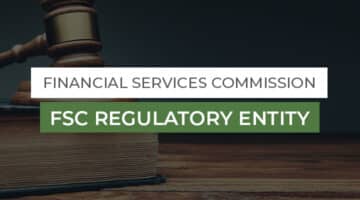
FSC Regulatory Entity
[top_three_brokers] FSC, the Financial Service Commission, is a financial services regulatory body that works under…
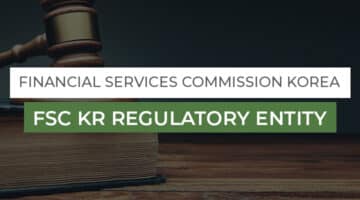
FSC Korean Regulatory Entity
[top_three_brokers] Korean FSC Regulatory Entity (The Financial Services Commission -Korea) is a government-run organisation responsible…
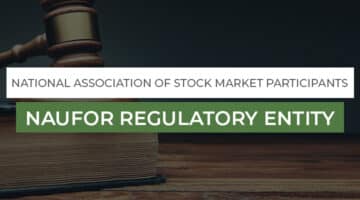
NAUFOR Regulatory Entity
[top_three_brokers] The National Association of Stock Market Participants is an industry-wide, independent self-regulatory organisation. It…
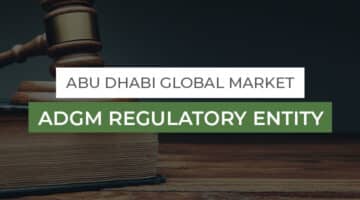
ADGM Regulatory Entity
[top_three_brokers] ADGM is the abbreviation of Abu Dhabi Global Market. It is an award-winning centre…
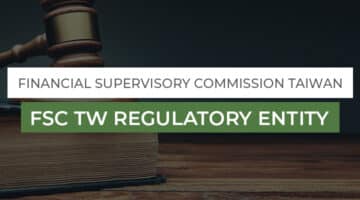
FSC Taiwan Regulatory Entity
[top_three_brokers] The Financial Supervisory Commission, FSC, is an independent authority body in Taiwan. Taiwan's financial…

GFSC Regulatory Entity
[top_three_brokers] Guernsey Financial Services Commission is charged with maintaining financial industry standards in the Bailiwick…
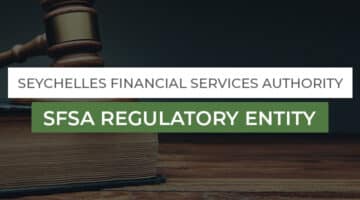
SFSA Regulatory Entity
[top_three_brokers] SFSA stands for Seychelles Financial Services Authority. This regulatory entity supervises non-bank financial services…
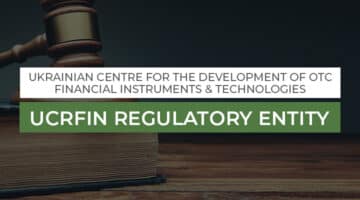
UCRFIN Regulatory Entity
[top_three_brokers] UCRFIN Regulatory Entity (Ukrainian centre for the development of OTC financial instruments and technologies)…

IIROC Regulatory Entity
[top_three_brokers] The Investment Industry Regulatory Organization of Canada (IIROC) is an independent self-regulatory organization within…

JSE Regulatory Entity
[top_three_brokers] The Johannesburg Stock Exchange (formerly known as the JSE Securities Exchange) is the largest…


